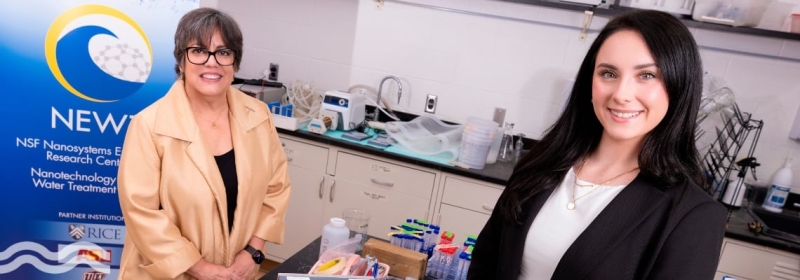- CA Yunus pays homage to Liberation War martyrs on Victory Day |
- Bangladesh capital market extends losing streak for second day |
- Bangladesh celebrates Victory Day Tuesday |
- 'Different govts presented history based on their own ideologies': JU VC |
Value Recovery Through Novel Desalination Process

Novel desalination process beats reverse osmosis
A student researcher at the University of Texas at El Paso (UTEP) has developed a method of brine desalination that can convert 90 per cent of salt water to fresh water, while recovering more valuable materials than conventional processes that rely solely on Reverse Osmosis (RO).
Professor's challenge leads student to brine solution
Tayia Oddonetto was a student at the university when her professor set a challenge during a class she was taking. "[They] said if someone discovered how to turn brine, water with a high salt concentration, into something of value, it'd be revolutionary for the planet."
This was the prompt Oddonetto needed: "At that moment, I told myself I was going to be the one who found the solution for brine, and that thought has never left me."
Oddonetto's perseverance paid off. Her UTEP research on brine desalination - a novel method that can convert over 90 per cent of salt water to fresh water - earned her first place and funding from the National Science Foundation (NSF) Engineering Research Centers Perfect Pitch Competition.
Choosing salt-free electrodialysis metathesis
Oddonetto, now a doctoral student in environmental science and engineering, specifically developed and pitched salt-free, electrodialysis metathesis, a novel approach to the desalination of brine, or salt, water. The technique is described in the December 2024 issue of the journal Desalination, and differs from reverse osmosis (RO), a process by which salt in water is removed.
Oddonetto told Aquatech Online: "Salt free electrodialysis metathesis seemed like a natural choice to pilot, the technology keeps constituents that would normally be problematic (Calcium, Sulfate) in separate streams."
The beauty of this approach is that more water can be squeezed out of the system (achieving a higher hydraulic recovery) because you do not need to run the risk of precipitating salts on the membrane surface.
She added: "The previous iteration of electrodialysis metathesis required the addition of NaCl, I found that counterintuitive because you're adding salt to water that is already salty. We use special monovalent ion exchange membranes to select for the NaCl already in the feed, meaning that this is a chemical free process."
Moving beyond RO limitations
According to Oddonetto, RO's main drawback is that it has a limited water recovery and only converts up to 85 per cent of salt water into fresh water, leaving the remaining water as concentrated brine.
This leftover brine is typically injected underground via a process called deep-well injection. But deep-well injection has consequences, such as environmental risks and the waste of valuable metals and minerals, including lithium which is used in the development of phones, laptops and electric vehicles.
How does salt-free electrodialysis metathesis work?
Salt-free electrodialysis metathesis treats brine by passing it through ion exchange membranes, thin sheets or films, and electrical currents that work to separate salt from water at the molecular level.
In early testing, over 90 per cent of salt water was converted to fresh water after going through reverse osmosis and salt-free electrodialysis metathesis in succession. In addition, Oddonetto said the technique generated higher levels of valuable metals and minerals that can be repurposed across several industries including technology, health and food.
Ivonne Santiago, an associate professor in the Department of Civil Engineering at UTEP and Oddonetto's doctoral advisor told media: "In the next few years, I anticipate that we will see Tayia's research applied on a large scale and fully see the tremendous benefit her work can have on humankind. Her journey is a testament to her perseverance, the importance of working on challenging problems and the value of a strong work ethic and positive attitude."
Next steps
Oddonetto research continues through multiple live experiments run in collaboration with the National Alliance for Water Innovation (NAWI), El Paso Water, the Kay Bailey Hutchison Desalination plant, New Mexico State University and the U.S. Bureau of Reclamation. These experiments will hlp to refine the salt-free electrodialysis metathesis process further and provide more insight as to the mechanisms that can be used to make the approach more cost-efficient and easily applicable on a large scale. – Aquatech Newsletter

